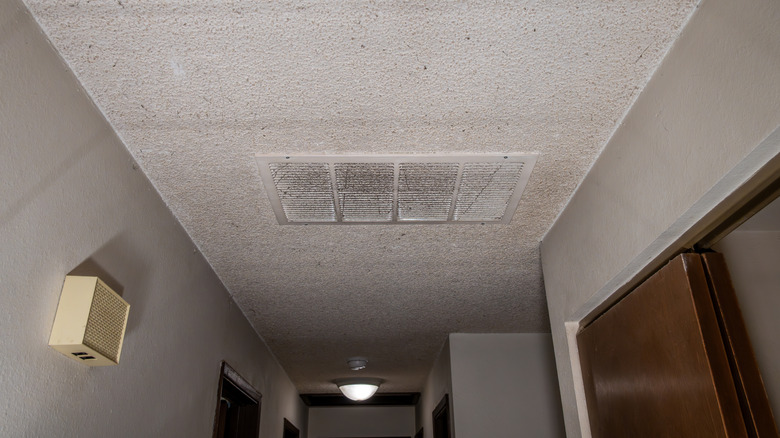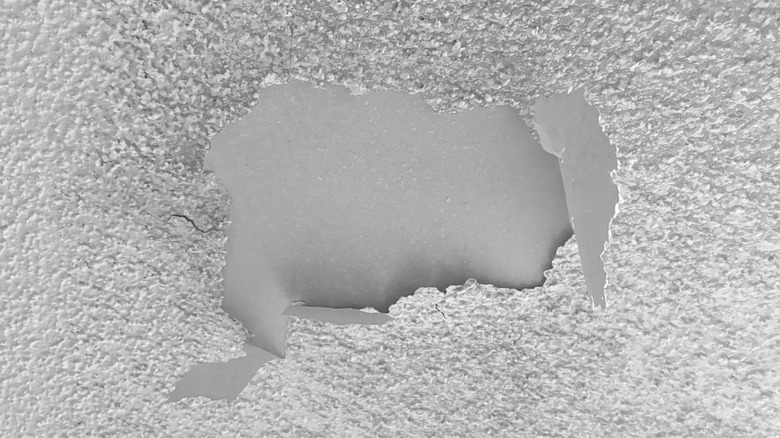The Easy Way To Tell If Your Popcorn Ceiling Has Been Painted Or Not
If you're looking for modern and effective solutions to transform your dated popcorn ceilings, you'll first need to figure out if it's been painted. Only then will you know which approach to take. Painted popcorn texture is difficult to scrape off, while unpainted ceilings flake off with greater ease. The first clear sign of a paint job is the color of the ceiling. The second is whether the texture comes off easily. Once you've determined if the ceiling has been painted or not, you can decide whether you want to remove it, cover it, or live with it for a while longer. Information is power, and this all-important detail will save you time, money, and perhaps a lot of ceiling dust in your hair.
Examine your popcorn ceilings closely. If the surface is unpainted, it will appear slightly darker where the drywall peeks through and lighter on the bumps. Sometimes, this creates a patchy finish. If your kitchen or bathroom has a popcorn ceiling, this test may be less effective. Discoloration can also be caused by mold and mildew. Another easy check involves taking a damp cloth and wiping it over a small patch of ceiling. If the popcorn texture softens, smudges, or comes away on the cloth, it's probably unpainted. However, if the finish comes off in chunks, looks smooth and lumpy rather than gritty, or has dust and debris stuck to it, it's probably been sealed with a coat of paint. Make sure you've completed asbestos testing before trying the second method to protect your health.
What to do once you know whether or not your popcorn ceiling is painted
Your next move depends on your level of patience, budget, and appetite for mess. If the ceiling is unpainted, removing it is quite simple — and can even be oddly satisfying. Don a mask and gloves, then spray the ceiling with water and use a paint scraper at a slight angle to remove the texture. If your popcorn ceiling has been painted, brace yourself. Scraping will be a longer, muckier job. Add vinegar to the water in your spray bottle at a 1:10 ratio, then spend more time on each square inch of the saturated ceiling with the scraper.
Luckily, scraping isn't the only option when faced with an unwanted popcorn ceiling. For example, overlaying the ceiling with ready-made planks, panels, and tiles in various materials is a budget-friendly DIY that makes dated popcorn ceilings a thing of the past. This kind of quick, easy cover-up job hides your popcorn ceiling, sparing you hours of scraping while modernizing the room or home. Before making a move on removal, though, consider the hidden downsides of popcorn ceilings. Older finishes applied before the 1990s may contain asbestos. If you didn't already test while checking whether the ceiling was painted, send a sample to an accredited lab — and be ready to pay for professional removal if it comes back positive.

